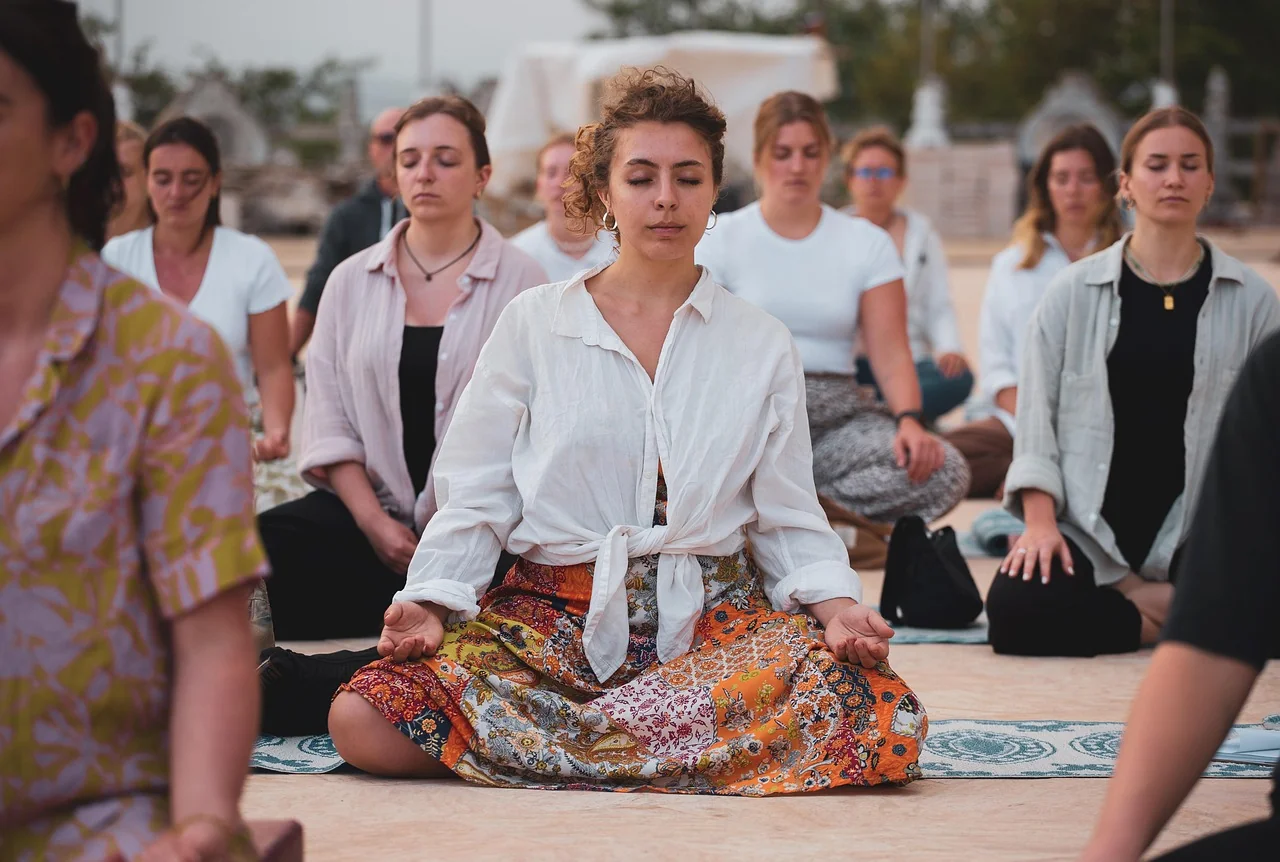You're lacing up your shoes, ready to hit the pavement, but within minutes, you're gasping for air with a side stitch screaming for attention. If this sounds familiar, you've discovered what every new runner does: your legs can carry you, but your breath dictates how far you'll go. Mastering the art of running: tips for beginners breathing is the single most important skill you can learn, transforming your run from a panting struggle into a powerful, moving meditation.
This guide is your roadmap. We're going to move beyond simply telling you to "breathe better" and dive into the practical techniques that connect your breath to your stride. You'll learn how to use foundational diaphragmatic breathing, find your perfect rhythmic pattern, and sidestep common mistakes that leave you winded. Let's unlock the secret to running farther, feeling stronger, and finding your flow with every breath.
Why Your Breath is Your Most Powerful Running Tool
When you think of running, you likely think of your legs and lungs. But the true secret lies in treating your breath not as an automatic response, but as a conscious skill. Your breath is the bridge between your mind and your body. Most beginners gasp for air because they approach running as a purely physical challenge, fighting against their body's signals. The meditative approach is different. It views the breath as an anchor, just like in mindfulness meditation. By focusing on the rhythm of your inhales and exhales, you can calm your nervous system, regulate your effort, and tap into a state of flow. This turns a frantic sprint for survival into a purposeful and sustainable practice. Learning proper breathing techniques is the cornerstone of running for beginners, transforming anxiety into awareness and struggle into strength.
The Mind-Body Connection: How Proper Breathing Fuels Your Run
Understanding the "why" makes the "how" much more intuitive. Physiologically, deep, efficient breathing delivers vital oxygen to your working muscles and efficiently removes carbon dioxide. The star of this show is your diaphragm, a dome-shaped muscle under your lungs. When you breathe deeply, your diaphragm contracts and flattens, pulling air deep into your lungs. This diaphragmatic breathing is far more efficient than the shallow chest breathing we do when stressed.
Mentally, this deep, rhythmic breathing is a game-changer. It signals to your brain that you are not in a state of panic. This can dramatically reduce the anxiety that often comes with feeling out of breath. By focusing on your breath, you anchor your attention in the present moment—the sound of your footsteps, the feeling of the air filling your lungs. This is the essence of mindful running. It pulls you out of the worried thought, "How much farther?" and into the calm reality of "Right now, I am running, and I am breathing." This focus can induce a flow state, making your run feel easier and more enjoyable, much like the deep calm that follows a meditation session.
Master the Foundation: Diaphragmatic Breathing for Runners
Before you can master breathing on the run, you must master it at rest. Diaphragmatic breathing, or "belly breathing," is the foundational skill upon which all running breathing techniques are built. It ensures you are using your full lung capacity.
Practice this technique while lying on your back with your knees bent:
- Place one hand on your chest and the other on your belly.
- Take a slow breath in through your nose, focusing on directing the air to fill your belly. The hand on your belly should rise, while the hand on your chest stays relatively still.
- Exhale slowly through your mouth. Feel the hand on your belly fall.
- Repeat this for 5-10 breaths, focusing on the deep, full expansion of your diaphragm.
Once you are comfortable with this, practice it while sitting, then while walking. The goal is to make this deep, efficient breathing pattern your default, so when you start running, your body naturally defaults to it instead of shallow chest breathing.
Finding Your Rhythm: Popular Breathing Patterns for Beginners
With diaphragmatic breathing as your base, the next step is to synchronize your breath with your stride. This rhythmic breathing creates a consistent flow of oxygen and can help prevent side stitches by evenly distributing impact stress across both sides of your body.
The 3:2 Breathing Rhythm
This is the most highly recommended pattern for beginner runners at an easy, conversational pace.
- How it works: Inhale for three foot strikes (left-right-left) and exhale for two foot strikes (right-left).
- Why it works: The odd-numbered pattern means you will alternate which foot strikes the ground at the beginning of your exhale. Since exhalation is when your core is most relaxed and vulnerable to impact, alternating sides prevents the same side from taking the brunt of the force every time, which can help prevent side stitches.
Box Breathing for Centering
This is a powerful pre-run technique to calm your nerves and focus your mind, borrowed directly from meditation and mindfulness practices.
- How it works: Sit comfortably before your run. Inhale slowly through your nose for a count of four. Hold your breath for a count of four. Exhale slowly through your mouth for a count of four. Hold the exhale for a count of four. This completes one "box." Repeat 4-5 times.
- Why it works: It regulates your nervous system, reduces pre-run anxiety, and brings your focus squarely to the present moment.
Nose vs. Mouth Breathing
This is a common question for those exploring running for beginners.
- Nose Breathing: Inhaling through your nose filters and warms the air. It can also promote a sense of calm and force you to maintain a slower, more manageable pace. It's excellent for warm-ups, cool-downs, and very easy runs.
- Mouth Breathing: As your intensity increases, you will need more oxygen. The mouth provides a larger airway, allowing you to take in more air quickly. Don't be afraid to breathe through your mouth, use a combination (inhale through nose, exhale through mouth), or switch entirely to mouth breathing as needed.
Common Beginner Breathing Mistakes (And How to Fix Them)
Recognizing and correcting these common errors will instantly make your running more comfortable.
Mistake: Holding Your Breath. This often happens when you tense up, especially on hills or when focusing on form. You suddenly realize you haven't taken a breath in several strides.
- Fix: Perform regular "breath checks." Every few minutes, consciously notice your breathing. Are you holding it? Is it shallow? Reset with a few deep, diaphragmatic breaths.
Mistake: Shallow Chest Breathing. Breathing with just the top part of your lungs is inefficient and can lead to side stitches and tight shoulders.
- Fix: Practice the diaphragmatic breathing exercise outlined above before every run. During your run, if you feel yourself getting tight, slow your pace and consciously try to push your belly out as you inhale.
Mistake: Breathing Too Fast. Panting or breathing at a very rapid, uncontrolled rate doesn't allow for full oxygen exchange and increases panic.
- Fix: Slow down. Your breathing rate is directly tied to your pace. If you can't breathe comfortably, you are running too fast. If running consistently triggers a stress response, exploring techniques for meditation for chronic stress off the track can help you build a more resilient and calm mindset. Focus on extending your exhalation to be longer than your inhalation, which can help trigger a relaxation response.
The journey to becoming a confident runner is paved with conscious breaths. Start by building your foundation with diaphragmatic breathing, then experiment with rhythmic patterns like the 3:2 method. Use box breathing to center your mind before you begin. Be patient with yourself; these breathing techniques are skills that require practice. With time, the connection between your breath and your stride will become second nature, unlocking a more joyful, sustainable, and truly mindful running practice.
In summary, mastering your breathing is a fundamental yet often overlooked component of a successful running journey. The key takeaways are to prioritize rhythmic, diaphragmatic breathing over shallow chest breaths and to find a pattern, such as the 3:2 inhale-to-exhale ratio, that feels natural and keeps you relaxed. Remember that nasal breathing can be beneficial for easier runs, while mouth breathing is essential for higher intensities. Most importantly, listen to your body; breathlessness is normal, but straining for air is a signal to slow your pace. Consistent practice of these techniques will build your aerobic capacity, reduce side stitches, and transform running from a panting struggle into a more meditative and enjoyable experience. Your breath is the most powerful tool you have to build endurance and confidence. Lace up your shoes, focus on that steady rhythm, and take the next step toward discovering the runner within you.


